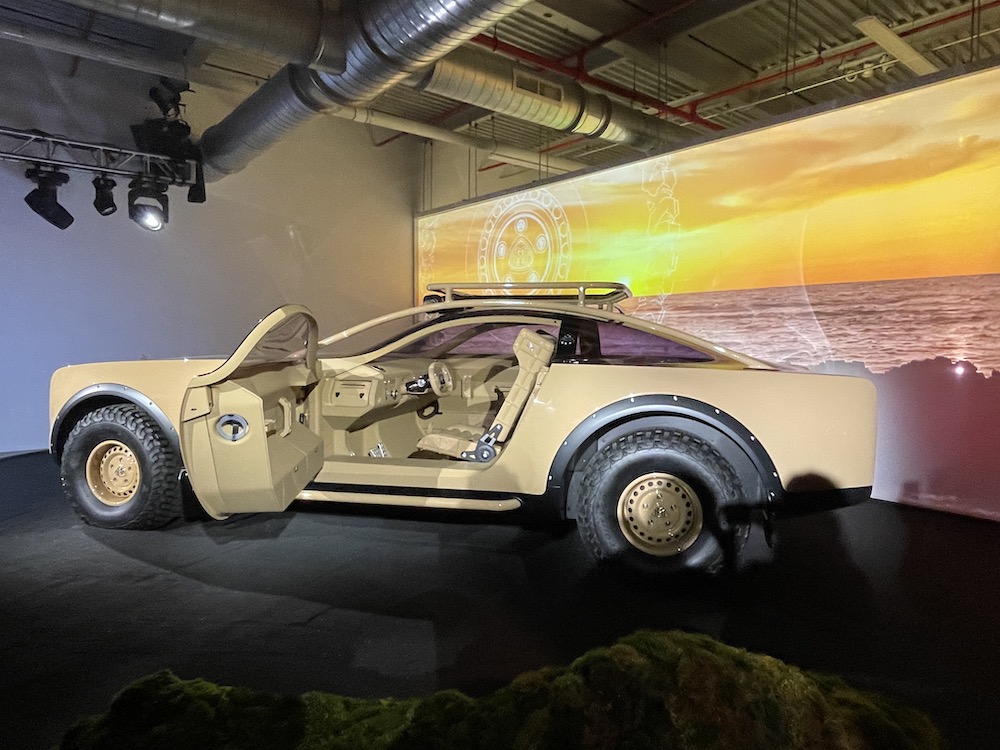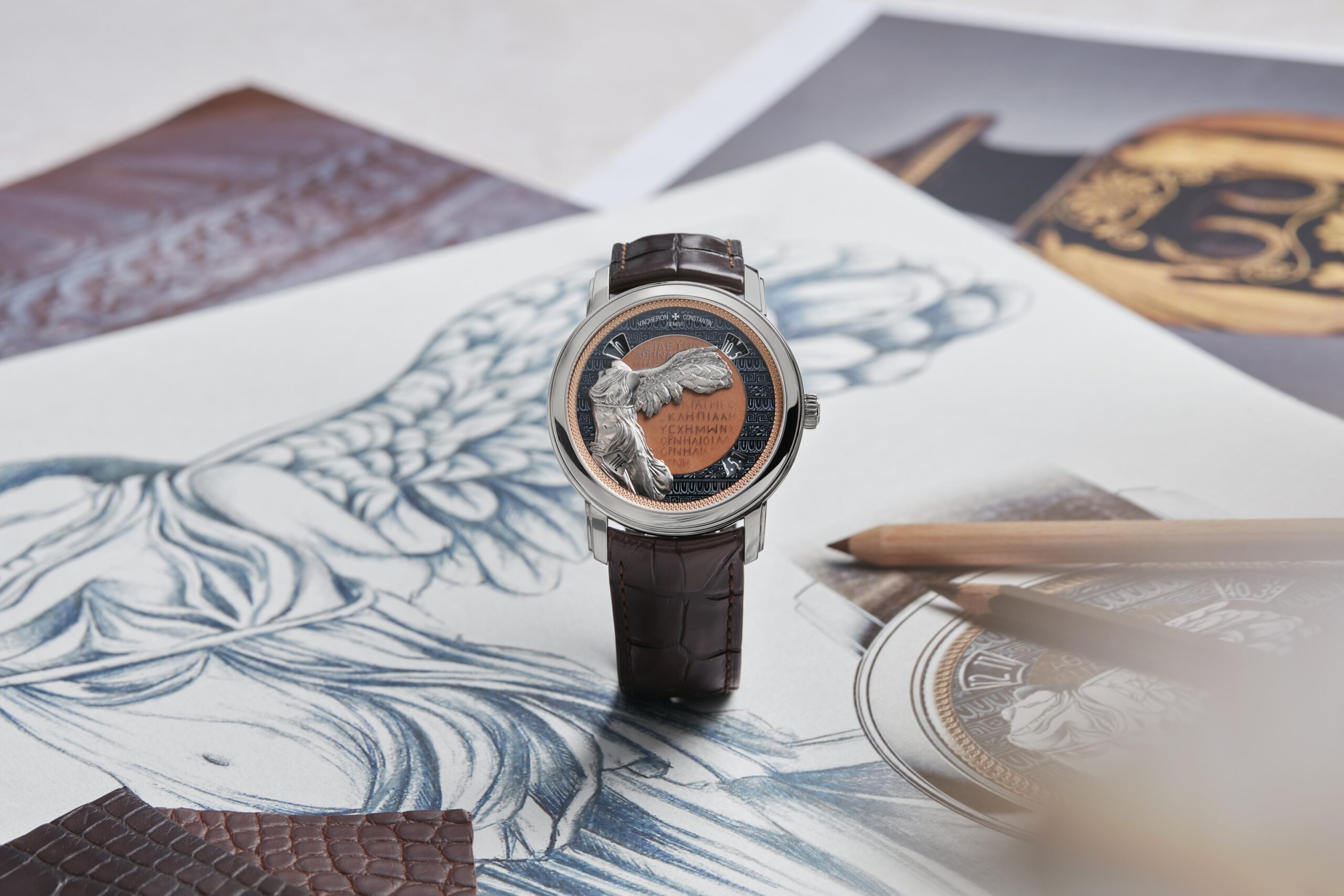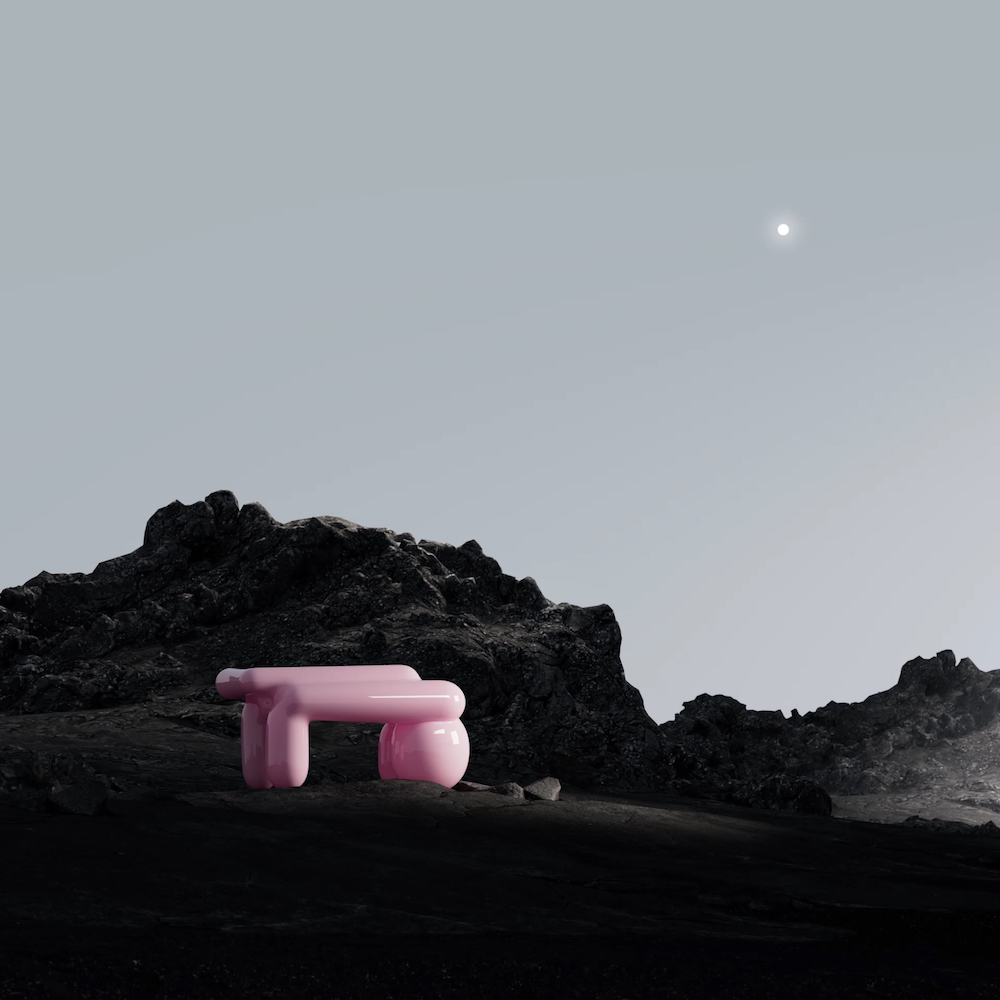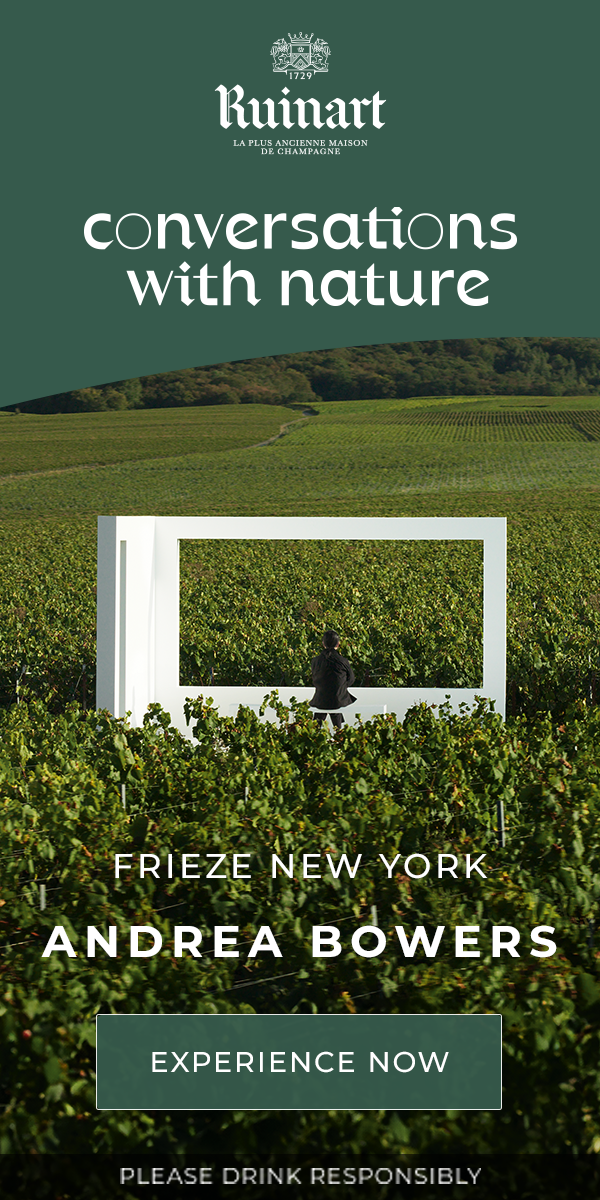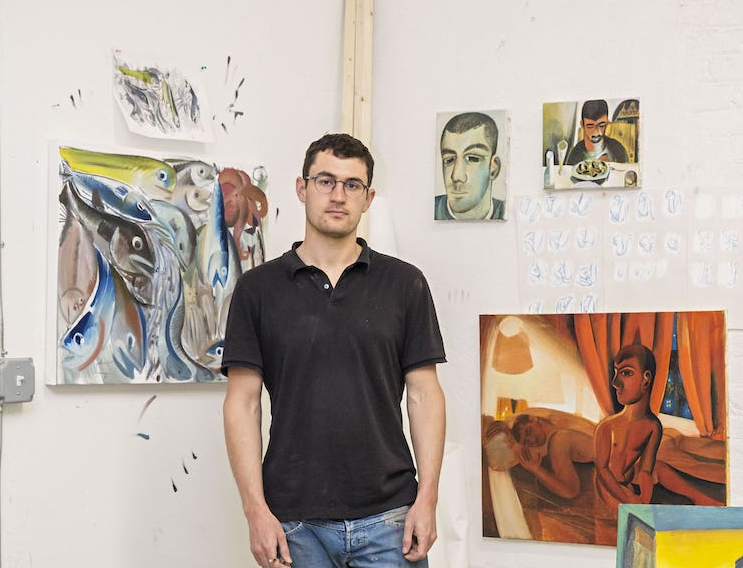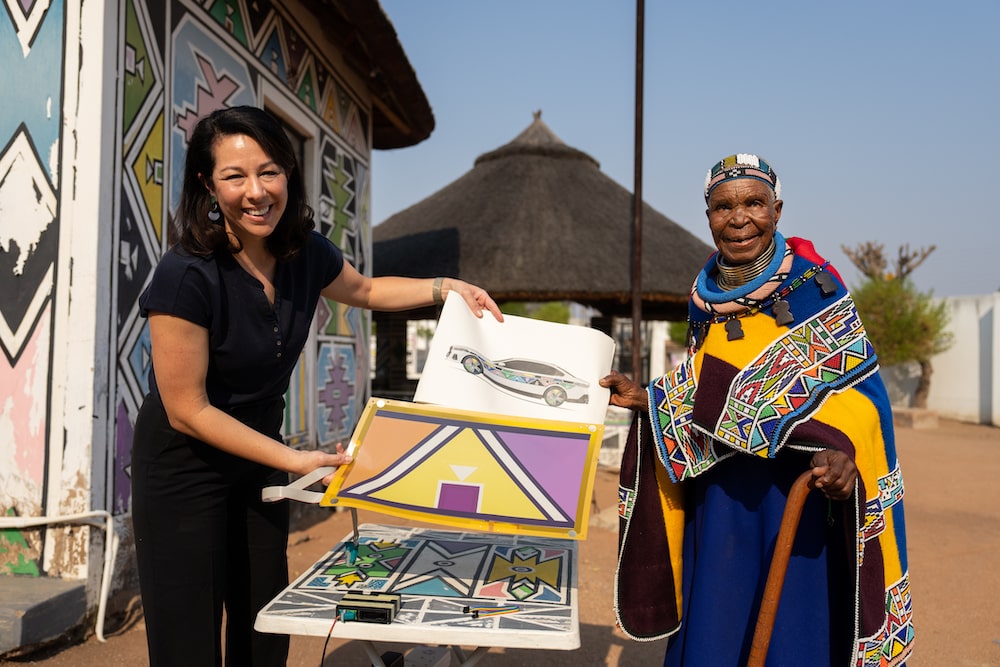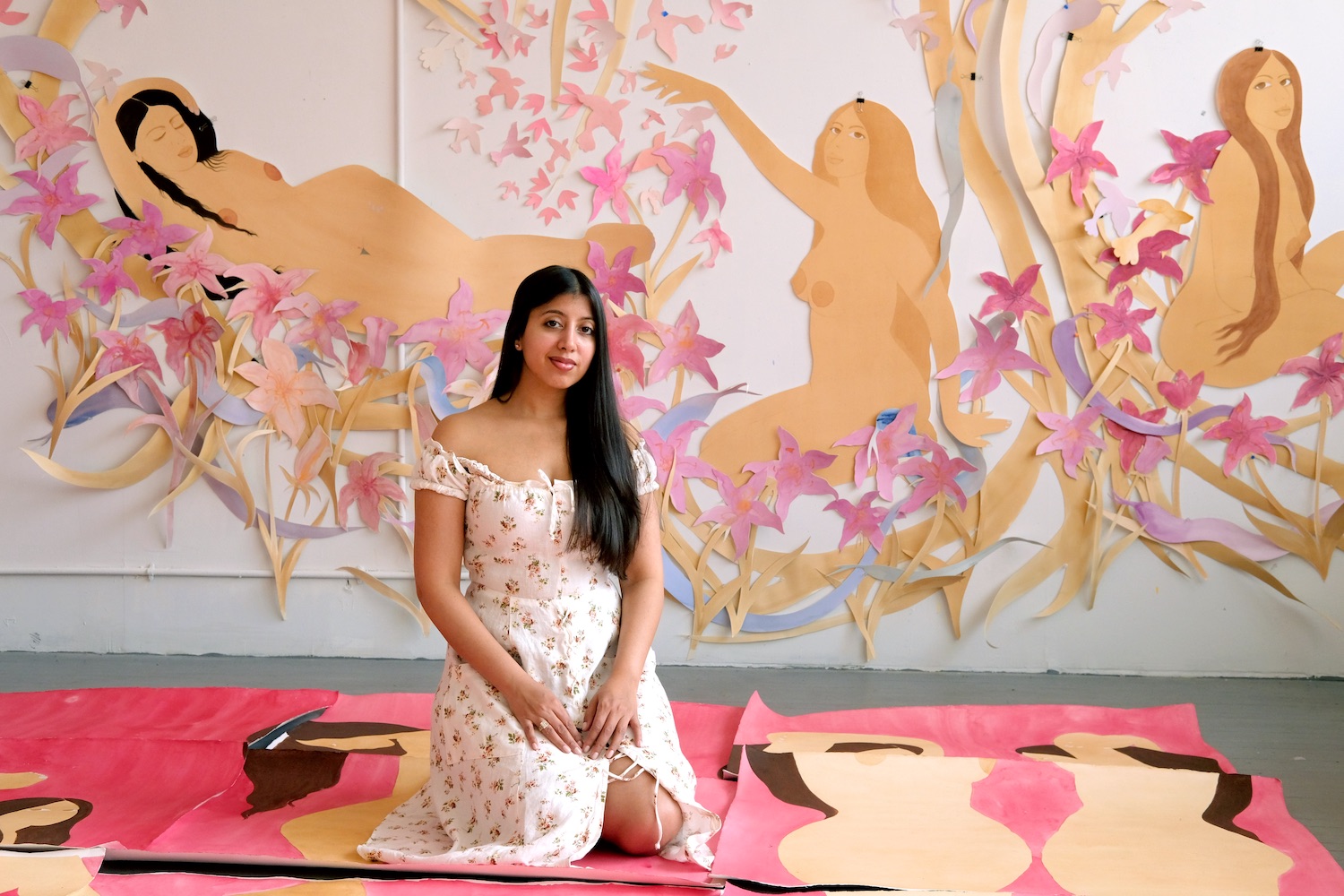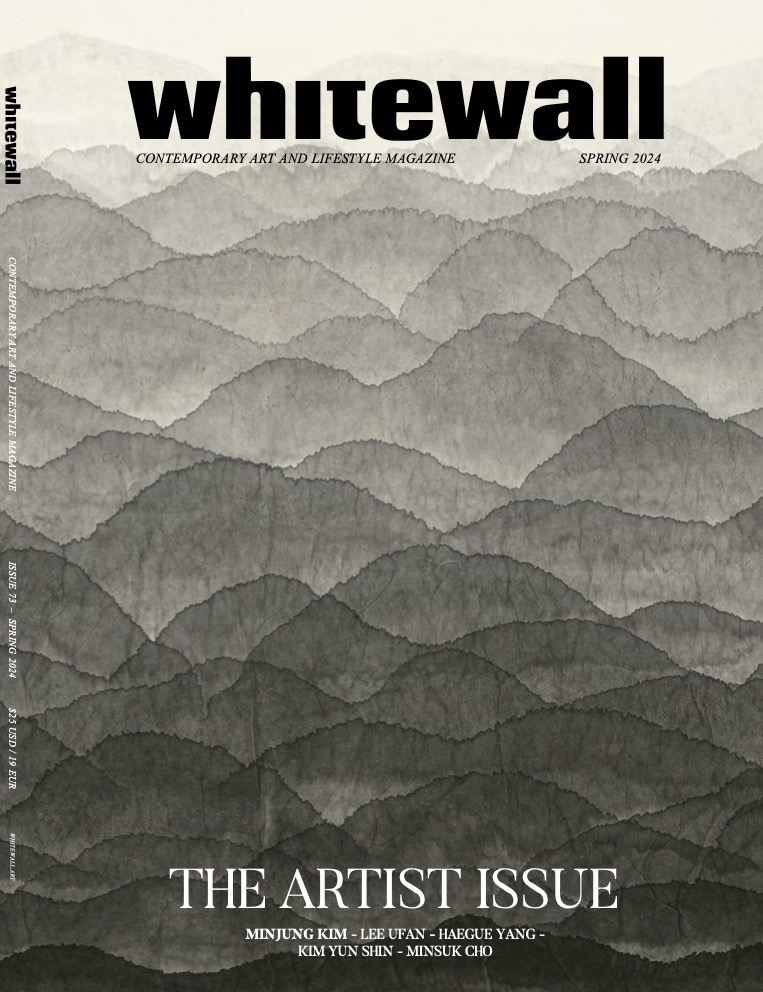A bubble-gum-pink office chair swivels against a desert-like landscape. A table of bulbous proportions standing on three legs and one sphere floats and twists in the wind. A tangled twist of drawers and legs in metallic opens and shuts. These are just a few of the digital furniture pieces created by the artist and visual designer Andrés Reisinger for the collection “The Shipping,” which sold out within minutes at auction on Nifty Gateway this past February.
That series was made up of 10 digital objects, five of which had physical counterparts. That balance of virtual and material is at the heart of Reisinger’s studio. While embracing the ever-expanding possibilities of technology in design, he also explores the possibility of bringing his otherworldly—but not too otherworldly—designs to real life. Like his Hortensia chair, covered in fluttering rose petals, dreamed up in digital and recently realized for production with the Dutch brand Moooi.
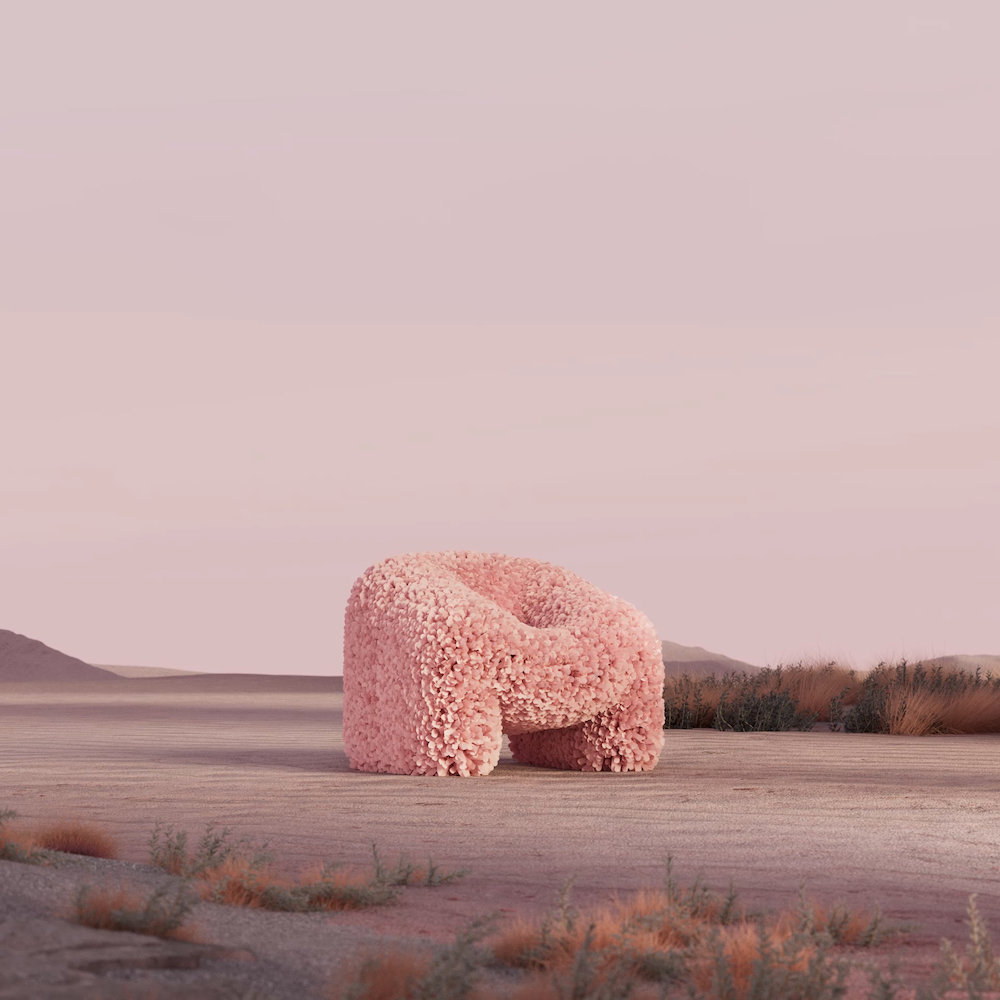
Reisinger’s designs and dreamscapes have one foot in this realm and one in the metaverse, offering a context to imagine the possibilities of what’s next. Whitewall spoke with the surreal creator about what it’s like to make when freed of temporal and spatial constraints.
Whitewall: What was the starting point for “The Shipping,” a collection of ten digital furniture pieces, five of which have physical counterparts?
ANDRÉS REISINGER: The idea of setting up an auction gave an impulse to creating “The Shipping” collection. After being confined during the whole year, I sensed the urge to play and step out from the beaten “sell and buy” paradigm. Building a concept around an online auction seemed more fun, and it inspired me to push the conceptual boundaries even further.
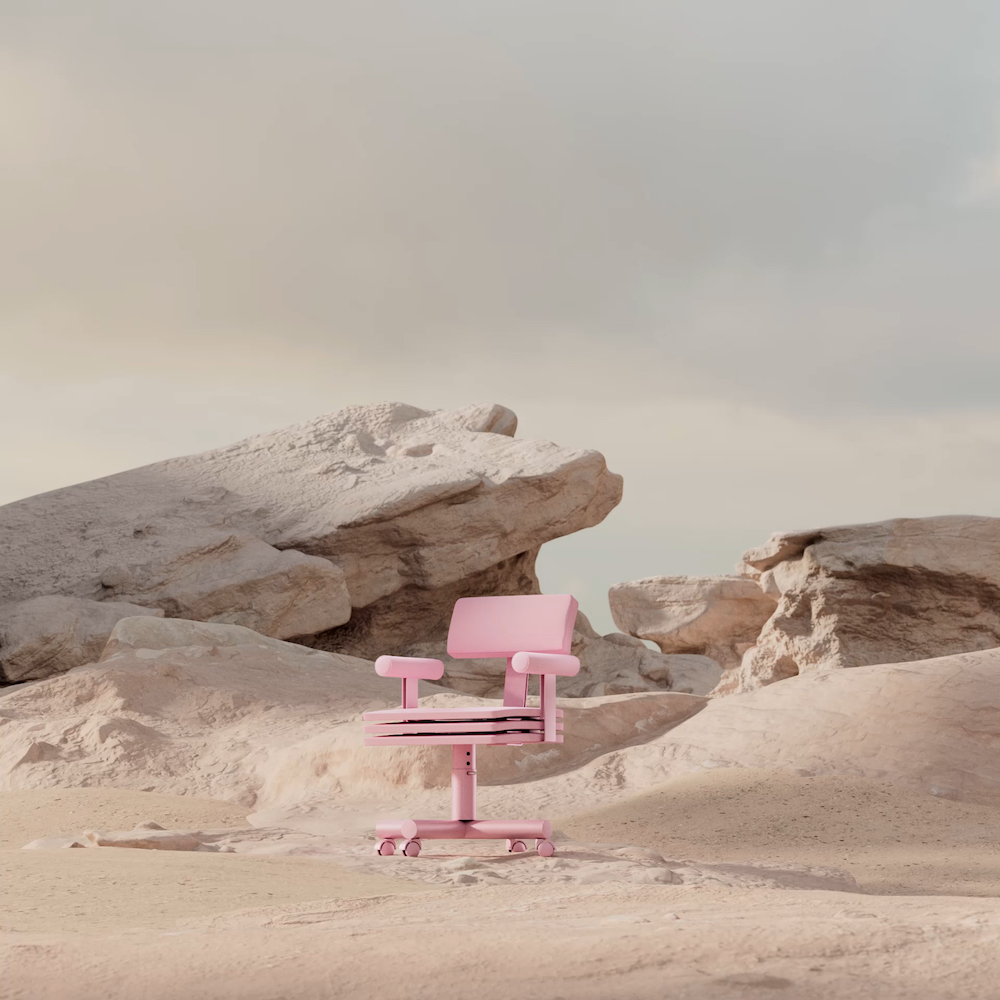
ABBA by Andrés Reisinger, from the Shipping Collection, courtesy of the artist.
WW: The collection sold out within minutes. What did you think of the response to these pieces?
AR: I guess the collection was appealing enough and the bidding principle seemed fun apparently not only to me.
WW: You described this collection as a manifestation of a new hybrid reality. How would you describe this hybrid reality? What about it inspires you?
AR: For most of history, our understanding of reality, of cultural experience, has been tethered to the physical world. Corporeality, temporality, and tangibility were what gave something its value, whether attending a vernissage or owning an art object. Over the past decades, that has begun to change. Technological advancements, cultural shifts, and, more recently, societal necessity, have accelerated the rise of the digital world, ushering in new modes of creation: playful, flexible, and limitless. The physical and the digital are gradually merging toward unity. Their fusion points to a new hybrid era of extended reality, in which art and culture are freed from spatial and temporal constraints, and the rules of experience are rewritten.

Portrait by Dimitri Daniloff, courtesy of the artist.
WW: You’ve said that, when designing for the digital realm, you like to deform reality, but not too much—a slight strangeness is key. How do you find that balance, and why is that important?
AR: I like to work with context. As you said, I try to deform reality, but not too much. That’s how I find my surreal output. My work cannot be too explicit, otherwise it would blend into what we already know. A light touch of oddity, that is my goal. If it’s too weird, it’s instantly dismissed; if it’s not strange enough, it is absorbed into everyday reality.
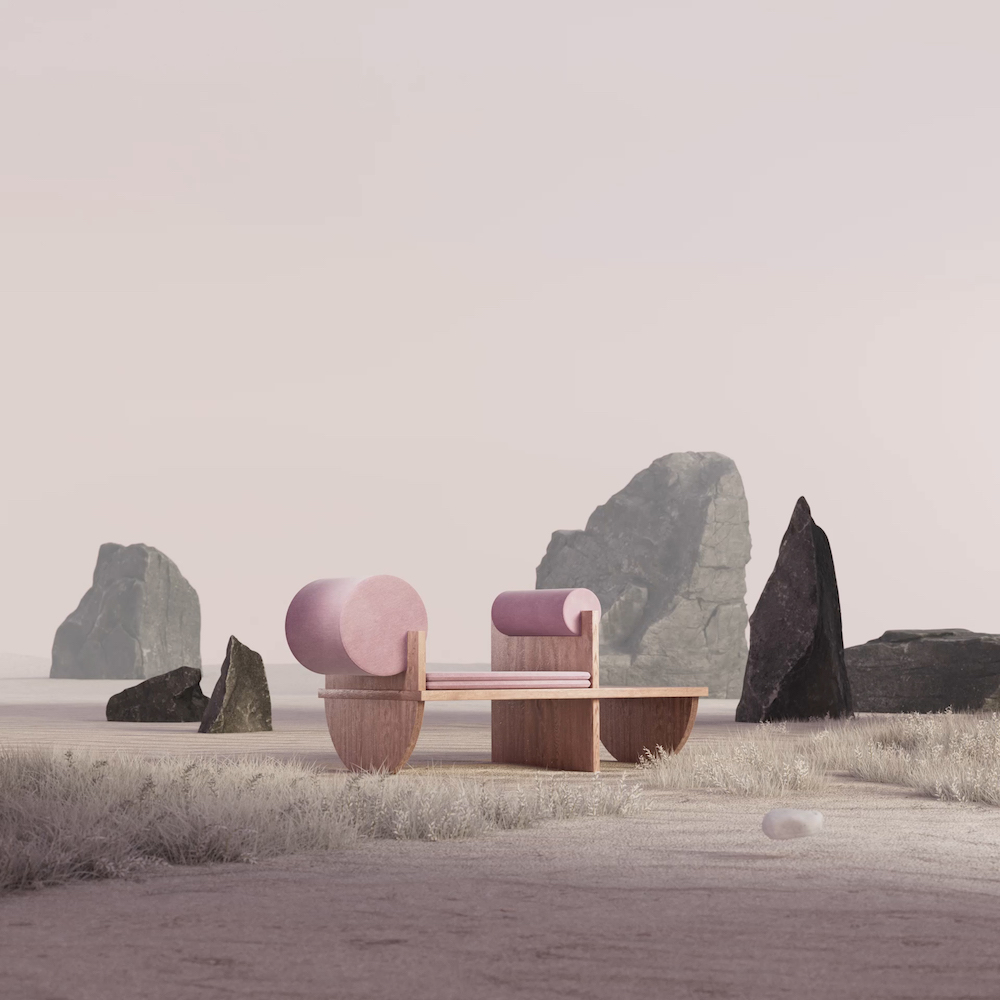
Matsumoto by Andrés Reisinger, from the Shipping Collection, courtesy of the artist.
WW: When does it make sense for you, artistically, to make a physical version of a design—like your Hortensia chair and new collection with Moooi, “The Ripples” carpets?
AR: Challenges can inspire me. If I see a possibility to discover new production pathways, I will push the digital design into its physical manifestation, as I will know that I will learn a lot along the way.
I also like to focus my practice on creating demand before supply. The current model is based on producing massive quantities of the product, storing those in warehouses, and then forcing the demand for it. Reversing the mindset and focusing on the real demand first can help us optimize the production.
WW: The Hortensia chair has been quite a phenomenon and recently toured around Europe. What was it like to see it out in the world?
AR: It felt surreal and exciting. Seeing the piece being still in trend after these years is quite unbelievable, knowing that the life span of any trend is rather short. But it looks like Hortensia is beginning to occupy a more solid place in a trend current.
WW: How do you like to explore texture in your digital objects?
AR: My work is texture-focused. With textures I try to evoke sensations that despite the digital context connect one to their memories of the physical experience, one’s own emotion that is linked to it.
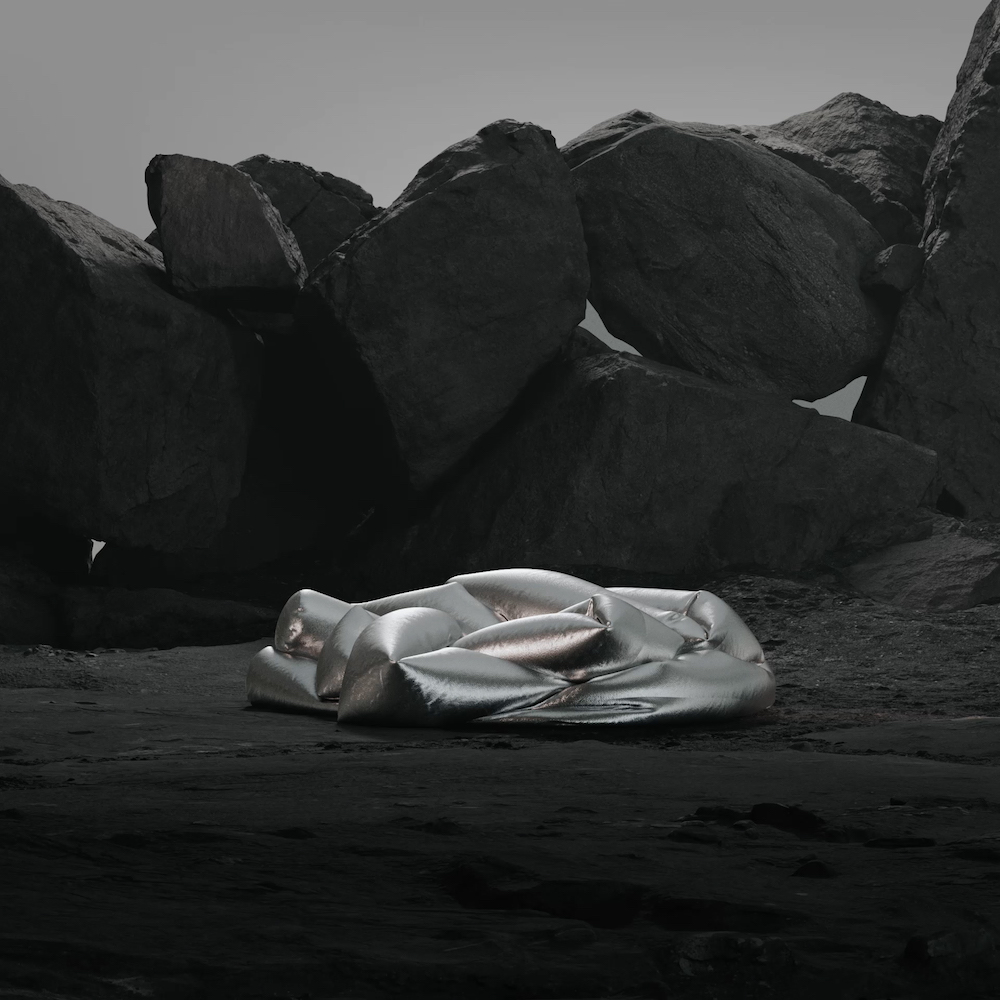
Complicated Sofa by Andrés Reisinger, from the Shipping Collection, courtesy of the artist.
WW: What kind of feelings do you want to evoke from your dreamscapes and digital interiors?
AR: It depends. Some artworks call up the feelings of kindness, softness, raise relaxing sensations, while others invite the viewer to proactively reflect on a certain topic or meditate upon something.
WW: What possibilities in digital design have opened for you with the rise of NFTs?
AR: It is generating a possibility to create unique pieces that cannot be anyhow replicated and a firsthand link and sell an artwork in digital form directly to a global audience of buyers without using an auction house or gallery, which allows them to keep a significantly greater portion of the profits they make from sales.
WW: You’ve done a number of projects with other artists like Skygolpe and Octaevo. What role does collaboration play in your practice?
AR: Skygolpe and Octaevo—both artists are my friends. Usually the collaborations take place spontaneously, and the goal is to have fun and sometimes to provoke a bit and make our identities clash. Still for the sake of fun and good times.
WW: You are a classically trained musician, collaborate with musicians regularly, and have said that nearly everyone in the studio is also a musician. What impact does music have on your creativity?
AR: Music can be a source of inspiration, absolutely. It is continuously present in the studio, and, as you said, almost each member in the studio has a trained ear for music, which naturally affects the process of creation. We even have a specific channel inside our workspace to share the musical gems between us.
WW: You recently released an NFT entitled An Essay Before Meeting My Daughter, with music by Daniel Alvarez. Why did you want to address the anticipation of becoming a parent with this piece?
AR: I’m about to have my first child, and it’s an experience that I’ve never had before. The time of anticipation generated emotions and feelings that I had either long forgotten or completely unknown, new feelings. This process made me reflect a lot. And so the piece An Essay Before Meeting My Daughter was created in reaction to that process. It was basically inevitable—it was just there. I needed to channel those feelings and emotions.
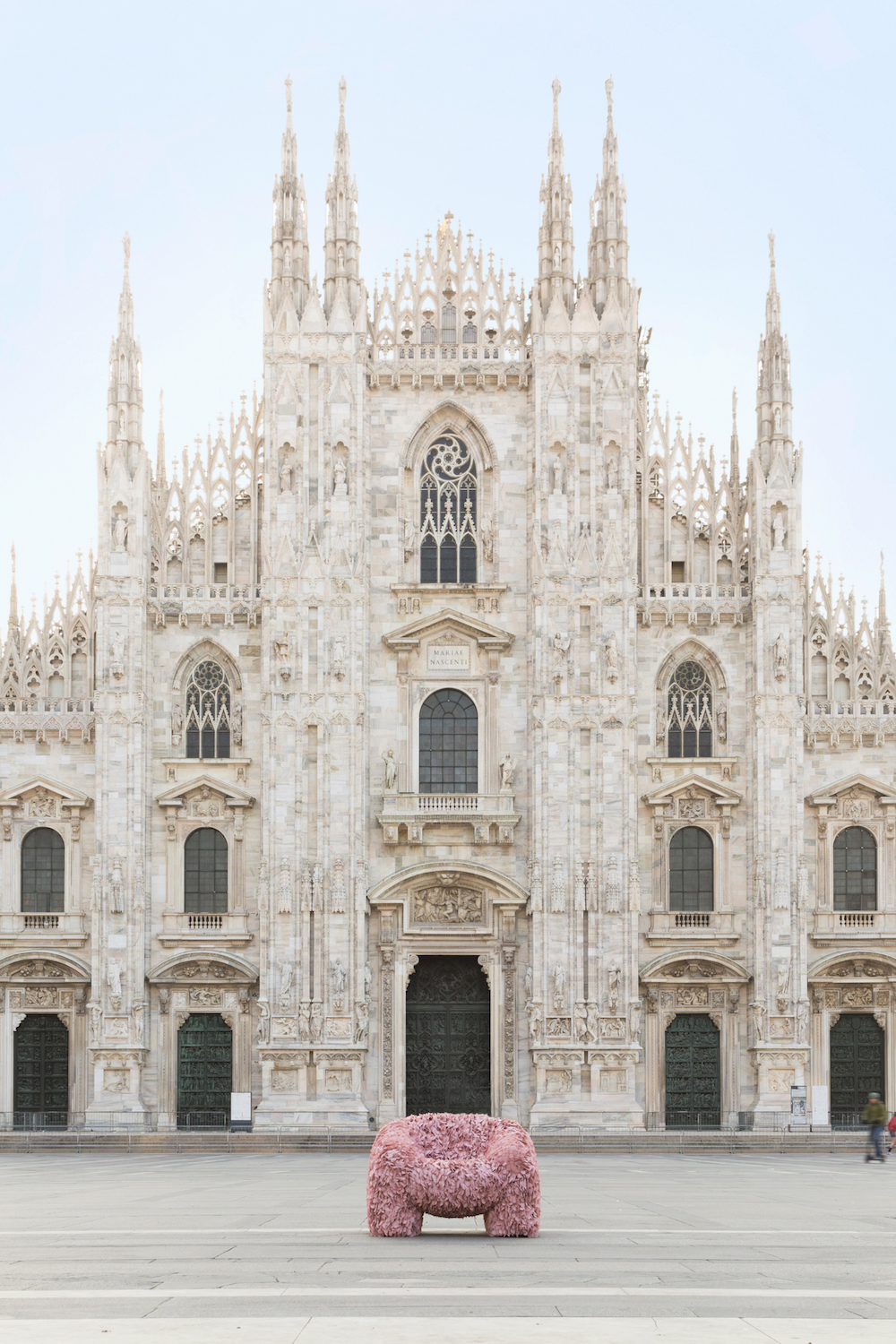
Hortensia Armchair by Andrés Reisinger in Milan, photo by Mattia Greghi, courtesy to the artist.
WW: You also sold an artwork to benefit Open Earth. Can you tell us about making this piece and your hopes for its positive impact?
AR: I have an acquaintance in Peru who invited me to participate in the Open Earth Foundation program. I felt compelled and inspired to contribute to this project and was happy to know that the donation went to the Madre de Dios forest conservation in Peru. This is just a very valuable grain of sand.
WW: You’ve said that you enjoy the freedom of 3-D design. Are there any limits in the digital design world?
AR: Limitations of technology. Digital design is dependent on the process of technological advancement. But those limitations are expanding, if not on a daily then on a weekly basis.
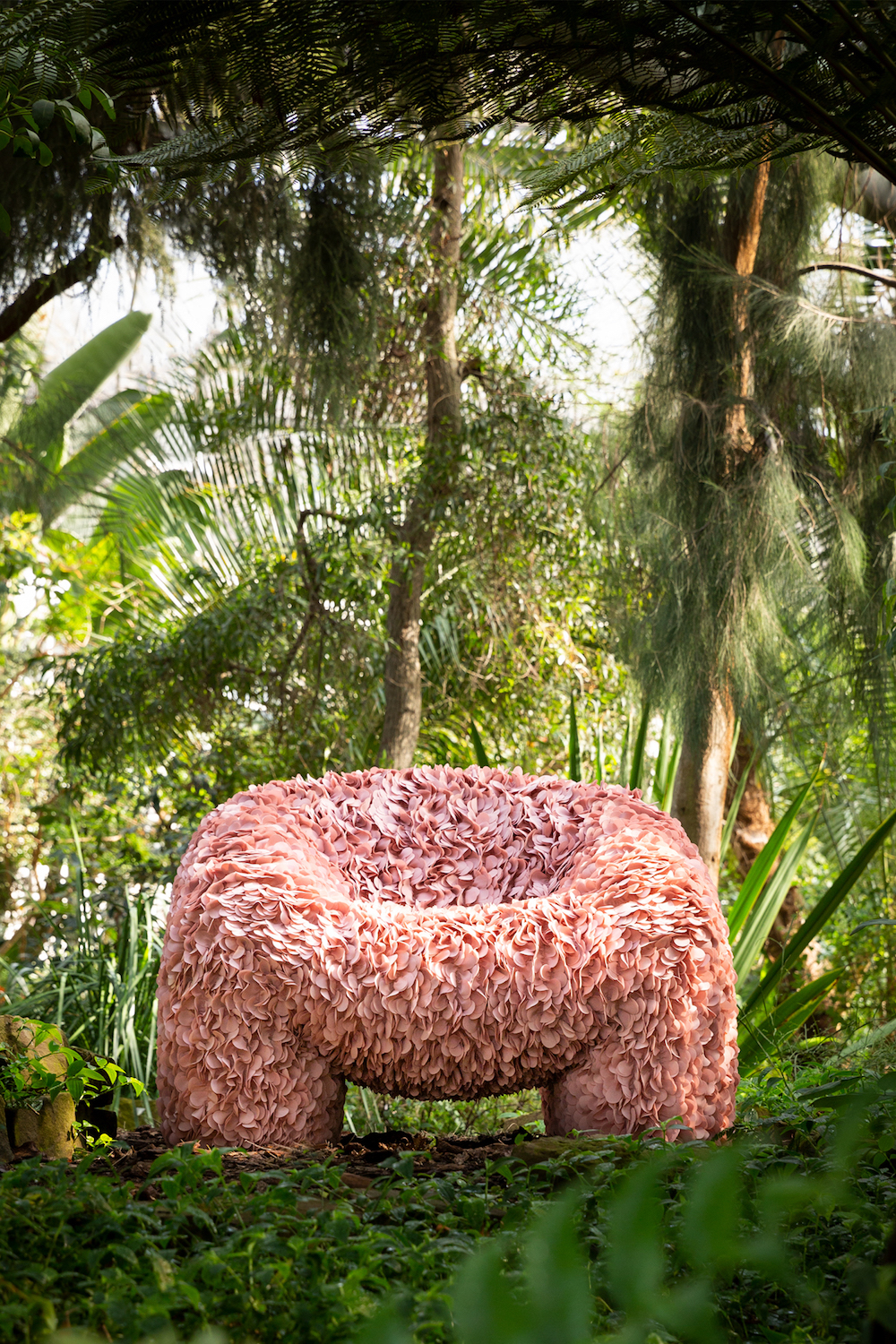
Hortensia Armchair by Andrés Reisinger in Amsterdam, photo by Moooi, courtesy to the artist.

